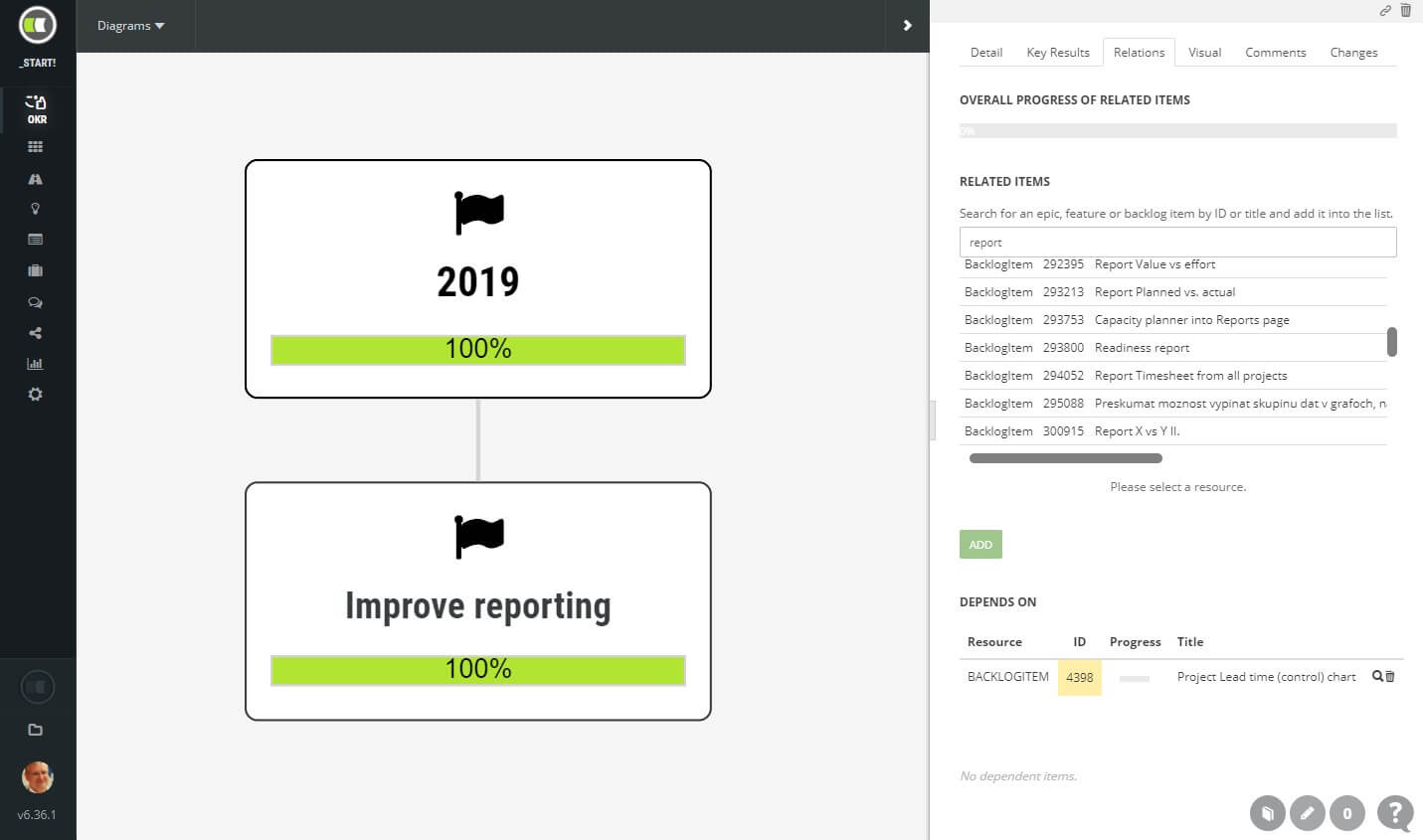Relations and dependencies
Relations and Agile?
Well, according to fundamental principles relations indicate an improper breakdown of the product backlog.
The fundamental principles that help define proper product backlog are called INVEST:
- Independent, backlog items should be defined in a way that makes them independent so the Product Owner can prioritize the backlog in an easier way. To make backlog items independent, it is suggested to slice user stories vertically, with an application of incremental and iterative development.
- Negotiable, backlog items must be clearly defined so everybody, stakeholders + Product Owner + team, understands and agrees with the definition.
- Valuable, backlog items which are planned for a sprint, should be valuable, they should have a meaning for an end-user. This principle helps slice backlog items properly. Vertically, end to end.
- Estimable, backlog items must be possible to estimate. If that is not possible, it indicates the complexity of a solution. Usually, proper slicing is helpful in this situation.
- Small, backlog items should be implementable in less than half of the sprint duration, typically 3-5 days. Small is nice. Small can be built fast. Small can be tested easier.
- Testable, it must be possible to verify the implementation.
But real life is more complex than just an ideal case. For successful product management, it is required to keep track from objectives, through epics and features, down to user stories and subtasks. Sometimes, the relation is just weak, items do not block the development of the other. However, the product owner needs to mark down the relation so she can track the complexity of the development.
NOTE: Before you will evidence any relation between two backlog items, try to break down your product backlog first so you do not need any relation.
Relations in ScrumDesk
Relations can be tracked in ScrumDesk between the following artifact types:
- Objectives
- Key Results
- Epics
- Features
- Backlog Items
- Root Cause Analysis nodes
- Retrospective ideas
- Tasks (in selected scenarios)
Every relation connects two entities:
- Depending, the target entity that is connected to the source. As an example, you have selected an objective node in the objectives chart and you connect it with a backlog item.
- Dependant, the source entity from which the connection is made. As an example, if you display details of the backlog item mentioned above, then depending would be the objective.
Every node might have multiple relations in both directions. The relation can be designed just once in a particular direction.
How to display relations
To display relations, click an artifact. Relations are displayed in the RELATIONS tab. Obviously. The view is split into the following sections:
- The overall progress of related items indicates the progress based on the progress of all related items. This progress is not mixed with the selected item’s progress so the product owner can judge the progress based on two perspectives. The node itself and its relations.
- Related items. The pane is where you can search for other items that can be added to the relation. To search, enter a few letters of a title, or ID. The results list displays the type, ID, and the title of found items.
- To add the item into the relation, click the item in the result list and click the green ADD button. The selected item is going to appear in DEPENDS ON section.
DEPENDS ON and DEPENDANT sections display related items:
- the artifact type,
- the ID of the item,
- the progress of the item,
- the title of the item.
To see details of the item, click the magnifier icon, or click the icon to remove the relation.

